As a coffee fan, there’s probably nothing more horrifying than hearing “Honey, the espresso machine broke!” This sentence literally takes you through the five stages of grief. The first one is denial: “That can’t be! It worked just fine yesterday!
Afterward, you go through all the other stages: anger, bargaining, depression, and acceptance. You get angry because you no longer have coffee, try to bargain your way into alternatives, and get depressed because you know it won’t work anymore.
Quick Navigation What Is An Espresso Machine?History Of Espresso MachinesTypes Of Espresso MachinesAutomatic Espresso MachineSemi-Automatic Espresso MachineSuper-Automatic Espresso MachineManual Espresso MachineParts Of An Espresso MachineHow Do Espresso Machines Work?How To Use An Espresso MachineEspresso Machine ManufacturersBrevilleRancilioGaggiaMr. CoffeeDe’LonghiMaintenance And Cleaning TipsThe Daily ProcessDescaling The MachineFinal ThoughtsWhat Is An Espresso Machine?
An espresso machine is a device that brews coffee by pushing nearly boiled pressurized water through a container of ground coffee and a filter. The result is a thick, very concentrated coffee going under the name of espresso.
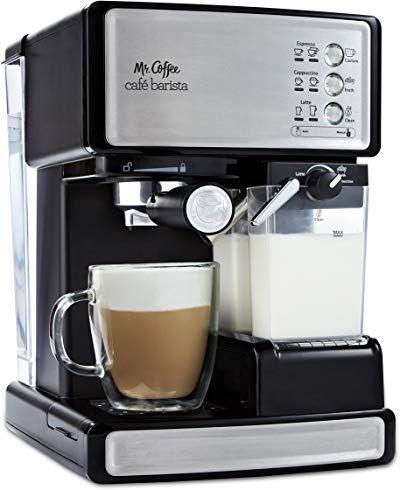
Said espresso may be used for a variety of things. You can drink it the way it is if you want to feel the “buzz,” or you can mix it with milk or creams to make lattes, cappuccinos, and similar concoctions.
Espresso machines will basically take the troublesome part out of brewing coffee. Instead of having to brew it yourself, the machine will do it for you – with a result that is also ten times stronger.
History Of Espresso Machines
The first espresso maker was built by Angelo Moriondo in 1884, an Italian that took part in the Turin General Exposition. He called his invention the “new steam machine for instantaneous and economic coffee or confection beverage.”
The machine was taken on by Luigi Bezzera, a mechanic from Milan that patented some new improvements on Angelo’s machine. His improvements were meant to produce even faster coffee that could immediately be served to people.
Five years later, the patent for the espresso machine was purchased by Desiderio Pavoni, the founder of La Pavoni. He then started producing these machines on a commercial scale – one every day – in his small workshop in Milan.
Types Of Espresso Machines
There are several types of espresso machines, each of them serving a different purpose and featuring a different way of functioning. The way you plan on using said machine will dictate the type that you buy.
Before settling on a type, think about the ease of operation, as well as the steps that you have to undertake in order to customize your espresso. Decide whether you want simplicity or lots of different features.
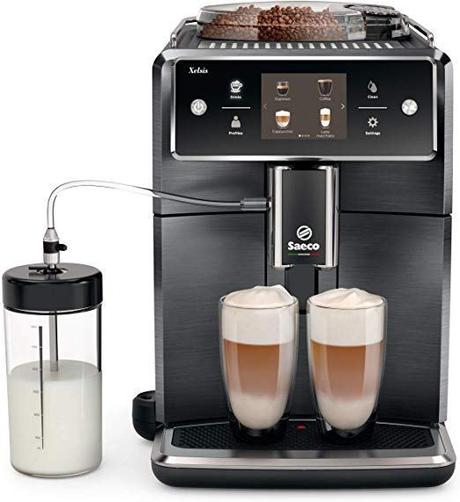
Afterward, make an estimation of your counter space and think about your budget: how much are you willing to spend? Once you’ve thought about all those factors, you may choose the best espresso machine for home use.
Automatic Espresso Machine
Automatic espresso machines will automate the “brewed volume,” therefore immediately and indirectly affecting the brewing time. The tamping and grinding will, however, remain manual.
These machines work by adding a flow meter at the group head, which will “sense” the stage of the espresso. Once the programmed water amount will go through said meter, the pump will be automatically turned off.
Here are some key points of the automatic coffee machine:
- It doesn’t require much human intervention, but you also can’t really customize your drink
- They’re cost and time-effective
- They’re easy to use and turn espresso-making into a simple process
- Maintenance is fairly simple
Sometimes, an automatic espresso machine will also have semi-automatic controls which allow you to customize the type of coffee that you want.
Semi-Automatic Espresso Machine
Semi-automatic espresso machines are the most common types found on the market since they feature a brewing pump that is turned on and off manually by the user. It’s relatively simple to operate them, but they do require some human intervention.
The brewing process of this kind of machine is typically like this: you add water to the reservoir, you turn the machine on, you add coffee into the portafilter, you place the cup under the portafilter and you turn on the machine.
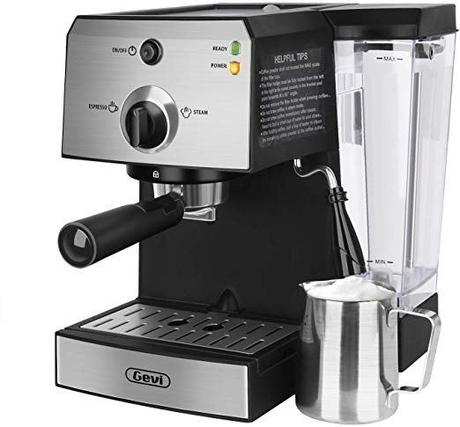
Once you get to the desired coffee volume, you turn off the switch. Typically, the “shorter” the coffee, the more concentrated it will be. If you leave it to fill a whole mug, then the strength will be that of your average coffee.
As for key points, here’s what a semi-automatic espresso maker brings to the table:
- Relatively easy to use, but you do have to operate them and the result can be rather messy
- Offers brewing flexibility and you can decide on the strength of the coffee yourself.
- The machinery is generally very simple, with no complicated internal boards.
- New models are generally compact in size, so they occupy little space on the counter.
- Generally less expensive than an automatic espresso machine
Semi-automatic models also have different styles of portafilters, which is why you need to keep an eye out when making the purchase. You can go for pressurized or non-pressurized, commercial style.
Pressurized devices will restrict the flow during the production of the espresso, which will result in a thicker crema for the coffee.
Non-pressurized machines, however, will not restrict the flow, which is why the crema consistency will be fully dependent on the coffee grounds and their fineness.
A non-pressurized semi-automatic espresso machine will be much more difficult to use than a pressurized one. Unless you have the time to practice different brewing methods and coffee ground preparation, you might want to go for a pressurized model instead.
Super-Automatic Espresso Machine
The super-automatic espresso maker is like an automatic machine – only on a super level. Unlike automatic machines, this one also incorporates a self-grinder, which means you also won’t have to bother grinding the beans yourself.
They work similarly to semi-automatic espresso machines – only instead of putting the coffee grounds in the portafilter, you’ll put the beans in the grinder.
The machine will then proceed to grind the beans, transfer them into a filter basket, and then brew the desired volume of your espresso into the cup.
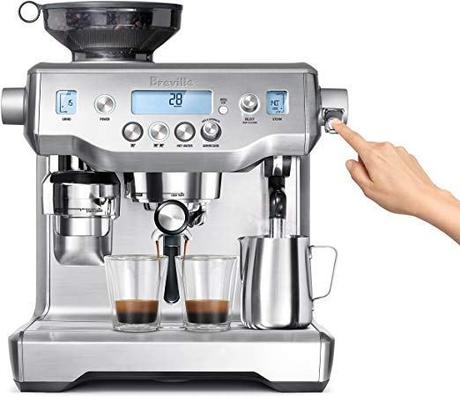
Now comes the question: why would I need a super-automatic machine when I could go for much cheaper semi-automatic ones? Well, the deciding factor here is how picky you are about your espresso aroma.
It’s a known fact that freshly ground coffee is more aromatic, resulting in a better tasting coffee. With semi-automatic coffee makers, we usually use coffee that was already ground by the provider – which means some of the aroma was already lost.
A super-automatic coffee machine, on the other hand, will brew the coffee the moment it’s moved from the grinder. It’s as fresh as it can be, with a strong aroma that should be obvious to any coffee fan.
Here are some key points that you might want to consider about the super-automatic coffee makers:
- They’re very easy to use, with no special skills or practice required. All you have to do is fill the spaces for the water and coffee grounds, and then you press a button.
- Every super-automatic espresso machine will produce great-tasting espresso, provided you use high-quality coffee beans.
- They have fewer brewing adjustments, but that depends on the models that you purchase. Some new models may allow you to control the temperature of the espresso, as well as the volume and other features.
- They usually need more counter space, but that is only because they have more internal features to produce fresh coffee.
- The price range is generally right under $400.
The best espresso machine under $500 is usually a high-quality super-automatic machine. Some of the most appreciated models include the De’Longhi espresso machine, which is famous for the fact that it is very easy to use.
Manual Espresso Machine
A manual espresso maker is a perfect thing for those “old souls” that want to keep the tradition in the coffee making.
Also known as the lever espresso machine, they will require a great degree of skill – since you will basically have to brew the coffee yourself. With this type of machine, there’s no pushing of a button; instead, there’s the pressing of a lever.
This type of espresso maker will allow you to become part of the process, which is a truly rewarding experience if you enjoy doing things yourself.
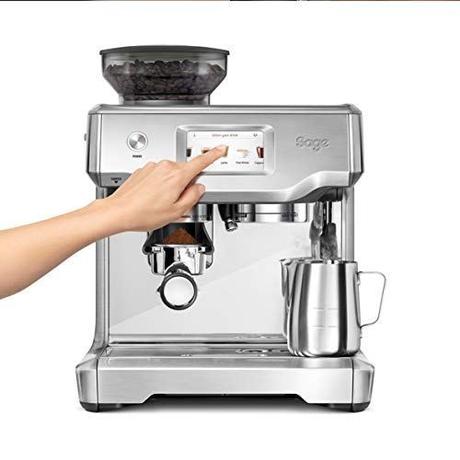
Plus, you have full freedom to customize the drink however you want. With a little bit of practice, you will know exactly what it takes to blend the perfect espresso for your taste.
You can go for stove types as well when it comes to manual espresso makers. It’s pretty much the “middle way” between pot-brewed coffee and machine-made espresso.
Here are the key points for a manual espresso maker:
- Classy, traditional design
- Mechanically simple, without any complicated boards
- Generally requires little space on the counter
- Fairly expensive ($800 and up), but they are the most durable of the batch
- They are more complicated to use since they require experience in coffee brewing
There is a Breville espresso machine that is very convenient to use and comes at fairly affordable prices, considering it’s a manual device. This is exactly what makes them so popular.
There are also other types of espresso machines, but all of them derive from the types above. Capsule espresso machines, for instance, are automatic and barely require any intervention other than putting in the pod.
Commercial espresso machines, on the other hand, can be both automatic and semi-automatic. Therefore, if you have a business that requires an espresso maker, be sure that the automation is to your fitting.
Parts Of An Espresso Machine
An espresso maker has several parts that vary from one machine to another, but there are some parts that will always remain constant: the boiler, the group head (or grouphead) and the portafilter (also known as the group handle) or the grinder.
The boiler is basically the reservoir where you put the water. The container is equipped with a heat controller that keeps the temperature fixed, allowing you to have coffee as hot or warm as you want.
The typical home espresso maker only has one grouphead, but devices with multiple heads are also a common occurrence within commercial buildings, such as restaurants or coffee shops.
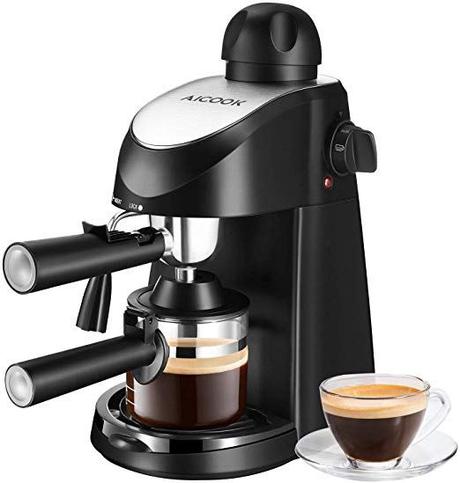
The grouphead is basically the part through which the water flows. It has many holes that evenly distribute the pressurized water over the ground coffee, usually in a cross-sectional flow.
The portafilter is mostly present in semi-automatic machines, and it’s the part where you put the coffee grounds before brewing the coffee. This part attaches itself to the grouphead and seals the coffee in as the pressurized water does its job.
The grinder is generally present only in automatic and super-automatic espresso makers. It’s the part that holds the coffee beans, grinds them, and then pushes them forward to the next level (where they are shot with the pressurized water).
How Do Espresso Machines Work?
There are many types of espresso machines, each of them working slightly differently than the other. Practically, everything starts in the boiler, where water is brought to the correct temperature that is either set by you or the machine itself.
The control circuit manages the electrical parts: the water pressure, temperature, grinder activation – everything that it takes to get the machine going. An electrode is used to make sure that the water debt is kept constant.
After that, everything moves into the pressure gauze. At this stage, the machine is registering and maintaining the pressure within the machine, which is usually between 1.5 and 1.9 for the boiler and 9-11 bars at the extraction part.
The water is then forced into the portafilter, extracting the espresso. Below the portafilter, you will generally see one or two spouts from which the espresso is flowing into the cup.
How To Use An Espresso Machine
Using the espresso maker will depend based on what model you use. For instance, an automatic machine only needs you to add the water and the coffee grounds in their respective containers, only leaving you with the press of a button.
The same thing goes for semi-automatic espresso makers – only, in this case, you’ll have to turn it off yourself. This feature allows you to set the strength of your coffee.
If you want a strong, concentrated coffee, you only fill half the cup. However, for a “long coffee,” you may leave more water to flow.
Manual espresso machines are the trickiest of the batch. This one takes more practice since it doesn’t have a predetermined amount of coffee that you have to use. You make the espresso based on your own preferences.
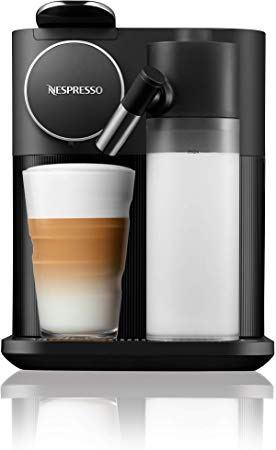
If you go for a stove-type machine, the process is much simpler. You fill the lower part of the espresso maker with water and the middle filter with coffee, and you place it on the stove. You will have to check every now and again to see if the tip is full.
A lever coffee machine is more difficult to use since you have to pull the shot yourself. This will also take time to adjust; if you press too fast or too slow, the coffee won’t be right.
However, how “right” it is will depend on your own taste – which is why you’ll have to practice in order to find the perfect brew.
Espresso Machine Manufacturers
Some manufacturers are more popular than others, and when it comes to brewing espresso, these are the brands that seem to do the best jobs:
Breville
Breville is a manufacturer that focuses mostly on semi-automatic types. Their technology focuses mostly around the so-called “ThermoBlock,” which allows the water to heat up very fast.
They also have a Breville espresso machine under 500 dollars, which is why it’s so popular among the masses.
Rancilio
Founded by Robert Rancilio in 1927, the brand now started off as early pressurized boiler machines. Currently, the Rancilio espresso machine is at the head of the market when it comes to super-automatic espresso machines.
Gaggia
The Gaggia espresso machine is generally automatic, with controls that are very easy to use. Started by Achille Gaggia, the purpose of the machine was to be as simple and fine as possible to enable easy use.
The company was also the first one to introduce the piston lever espresso maker, which is why he was hailed as the Father of the modern espresso maker.
Mr. Coffee
Mr. Coffee is popular for the fact that they produce quality espresso makers at low prices. The Mr. Coffee espresso machine generally functions on a 3-in-1 system, allowing you to make lattes, espressos and cappuccinos easily.
They are also very easy to disassemble, so if you dislike the hassle of brewing and cleaning, this one is the brand for you.
De’Longhi
No matter if you are looking for a super-automatic espresso maker or a manual device, De’Longhi has a model for everything. The brand is perfect for beginners since it always offers you preset features for brewing the coffee.
A De’Longhi espresso machine also uses the ThermoBlock system. That’s why their machines are great for rushed mornings. They are appreciated for the fact that they are fast, easy to use and not to mention easy to clean.
Maintenance And Cleaning Tips
In order for you to have fresh coffee every day, you need to make sure that you know how to clean espresso machine. There are two types of cleaning sessions that you need to go through – one every day and one every few months.
The Daily Process
First things first, you have to clean your espresso maker after every use – or at least at the end of every day. Take out the portafilter and give it a thorough scrub, and then move towards the groundhead.
For this process, you may either use the brush that came with the machine or a regular toothbrush. Rinse and clean with detergent, to make sure that the oils and residue are gone from the surface.
Descaling The Machine
Once every three to six months, your espresso maker needs to go through a special kind of maintenance, which is called descaling. The process is short, but it will do wonders for your machine.
You start by buying a descaling solution and place it in the water container, turning it on like you would during a normal coffee-making session. After it’s done, turn the machine off and leave it to sit for a couple of minutes.
After the descaling agent was allowed to work, pour some clean water and repeat the process. This will flush out any remaining residue.
Many people also use vinegar as a natural descaling agent but keep in mind that while it may work to clean the device, it will also need more water flushes. If you don’t rinse the insides well enough, you risk drinking vinegar coffee every morning.
After the descaling process is done, take a clean cloth and wipe off the excess water from the surface.
Final Thoughts
Owning a coffee machine can literally be a matter of life and death – or at least a matter of sanity. For a coffee addict connoisseur, it’s impossible to start the day without at least one cup. It’s a proven fact that coffee makes people happy.
This is exactly why you need to be careful when choosing your espresso maker. You need to read as many espresso machine reviews as possible and form an opinion for yourself.
If you read the above guide and are still not sure what is the best coffee machine, you are more than welcome to read our buying guide. We listed some very useful tips for you in there as well.
Resources
Wikipedia
WikiHow
HowStuffWorks
Smithsonian magazine
Coffee Brewing Methods
